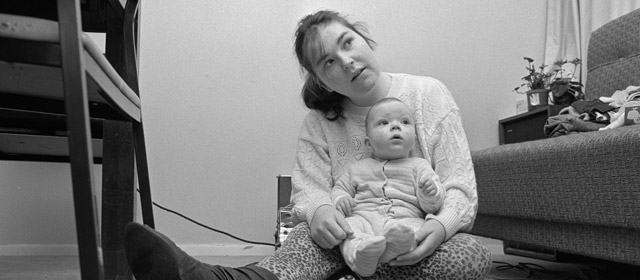He korero whakarapopoto
Early welfare benefits
Before the 20th century there was no government support for families in financial difficulty. People who were unemployed or in need had to rely on relatives, their community, or charities.
A pension for widows with children was introduced in 1911, and there were benefits for old people and war veterans.
Children
Children with no one to care for them were sent to industrial schools, as were children who were ‘uncontrollable’ or who had criminal convictions. Later more children were fostered or adopted. Children whose parents weren’t married didn’t have the same legal rights as others until 1969.
Social security and family benefits
In the 1930s the first Labour government set up benefits for people who were unemployed or sick, and for low-income families.
Employers were supposed to pay men a ‘family wage’, which meant enough money to support a wife and two children. A family benefit for low-income families with three or more children was introduced in 1926, and in 1946 this was extended to all families with children.
Domestic purposes benefit
In the 1970s the divorce rate rose and there were more sole parents. In 1973 the domestic purposes benefit (DPB) was introduced as a statutory benefit to support sole parents, who were mostly women. Some people thought the DPB was going to break up the traditional family.
Women and employment
In 1972 a law was passed so women would be paid the same amount as men for doing the same work. More women were in paid work, but tended to be in lower paid jobs, work part-time, or take time out to care for children. This meant that women generally had less money.
Benefit cuts
In 1991 the government cut the rate of most benefits. In 1998 new rules were introduced to encourage parents on the DPB back into work sooner, and people on the unemployment benefit had to do work in their communities.
Family welfare in the 21st century
In the early 21st century a new government stopped the requirement for people to do community work to get the unemployment benefit, and for parents on the DPB to seek work when their children were still young. They funded 12 weeks of paid parental leave in 2002 (extended to 14 weeks in 2004) and initiated the Working for Families programme, which gave income support to working parents and subsidised childcare. This was criticised by some because it did not help families on benefits.
Working for Families was supported by a National government between November 2008 and October 2017 and paid parental leave was extended to 18 weeks. In December 2017 a newly elected Labour/New Zealand First coalition government extended paid parental leave to 22 weeks from 1 July 2018 and to 26 weeks from 1 July 2020. A new Families Package also introduced Best Start weekly payments for the first year to all parents of children born on or after 1 July 2018. (Parents receiving paid parental leave cannot receive Best Start payments at the same time and the level of Best Start payments between 1 and 3 years is related to parental income). Some parents also became eligible for increases in tax credits and accommodation payments from mid-2018.





